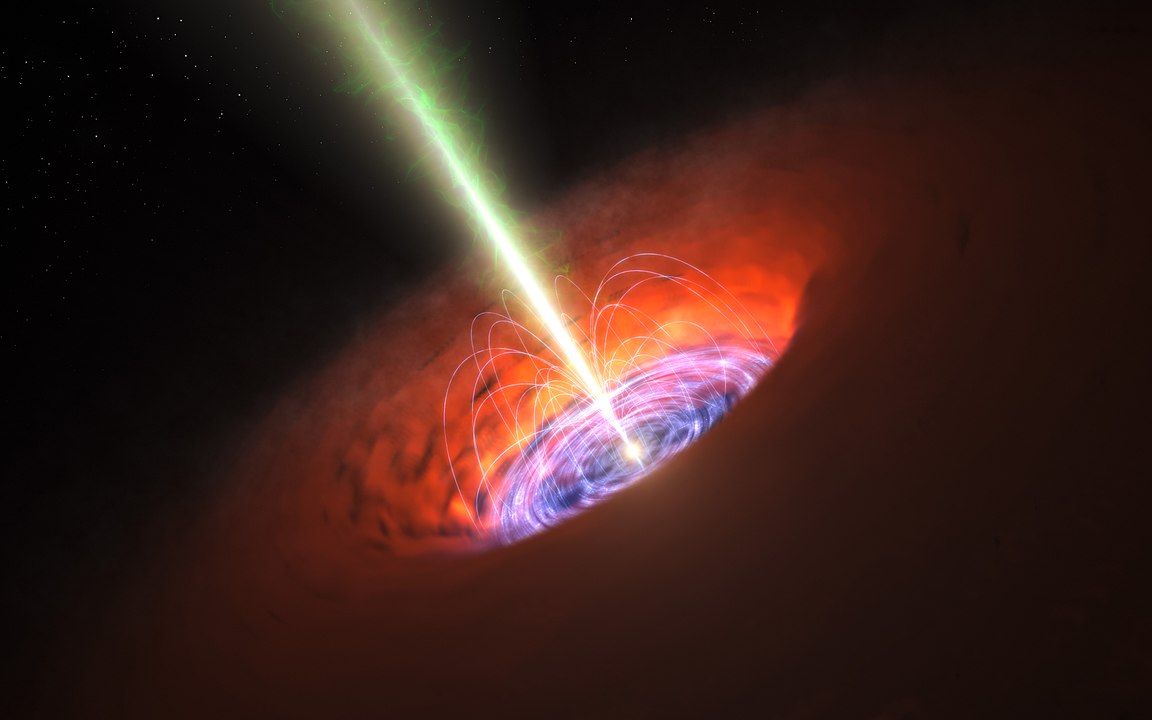Where do they come from, those beguiling singularities that flummox astrophysicists—and the rest of us. Sure, we understand the processes behind stellar mass black holes, and how they form from the gravitational collapse of a star.
But what about the staggering behemoths at the center of galaxies, those supermassive black holes (SMBH) that can grow to be billions of times more massive than our Sun?
How do they get so big?
It’s pretty clear that SMBHs don’t start out that massive. They must grow. And in broad terms, there are only two ways that can happen: a massive progenitor star forms, the over time through mergers and consumption, it becomes massive enough to one day be a SMBH.
The problem is, studies show that the conditions for the formation of these massive progenitors are rare, and can’t explain the large number of SMBHs astronomers see out there: one at the center of each large galaxy.
The authors of a new paper think they’ve figured it out, by using a powerful supercomputer.
“Our new model is able to explain the origin of more black holes than the previous studies…”
Kazuyuki Omukai, Co-Author, Tohoku University
The paper is titled “Supermassive star formation via super competitive accretion in slightly metal-enriched clouds.” Lead author of the paper is Sunmyon Chon, a postdoctoral fellow at the Japan Society for the Promotion of Science and Tohoku University. The paper is published in the Monthly Notices of the Royal Astronomical Society.
One of the issues with supermassive black holes is that there are so many of them. Astronomers are pretty sure there’s one at the center of all large galaxies. How do we go from a collapsed star to something so extraordinarily massive?
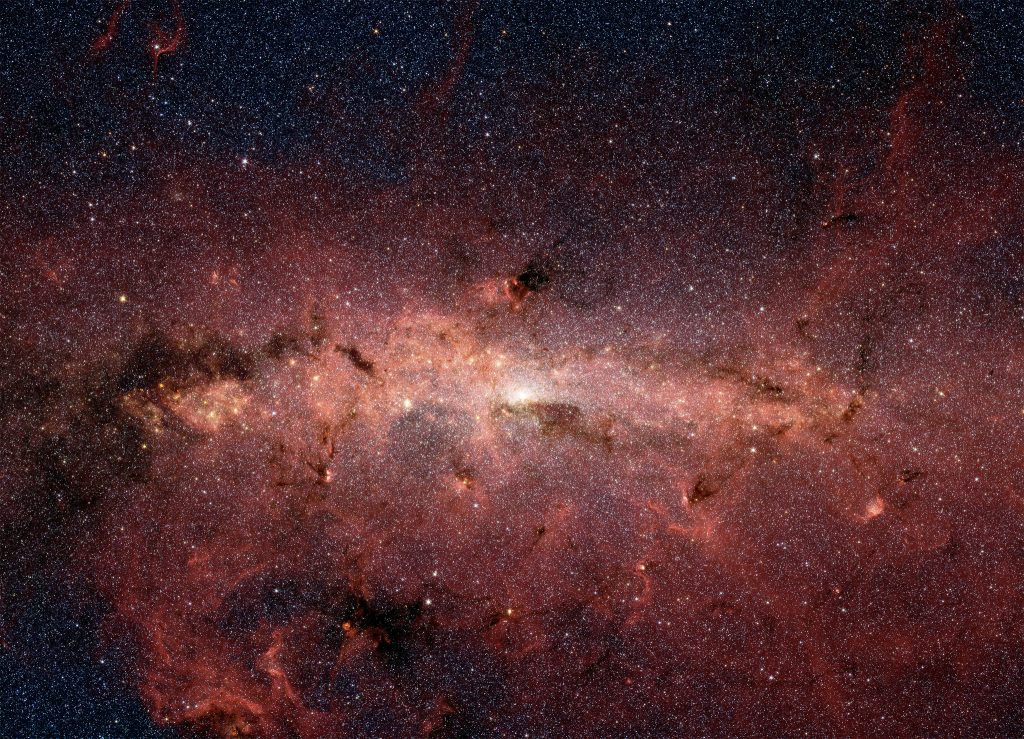
The authors of this new study suggest that the stars that are the precursors to SMBHs can form in a wider set of conditions than previously thought. Their theory says that these precursor stars grow not only by accreting interstellar gas, but by swallowing other, smaller stars too.
“Our new model is able to explain the origin of more black holes than the previous studies, and this result leads to a unified understanding of the origin of supermassive black holes,” says Kazuyuki Omukai, co-author of the study, and professor at Tohoku University.
It all starts in massive clouds of interstellar gas. Inside those clouds, massive stars can form due to collapse by self-gravity. Those progenitor stars can eventually evolve into SMBHs.
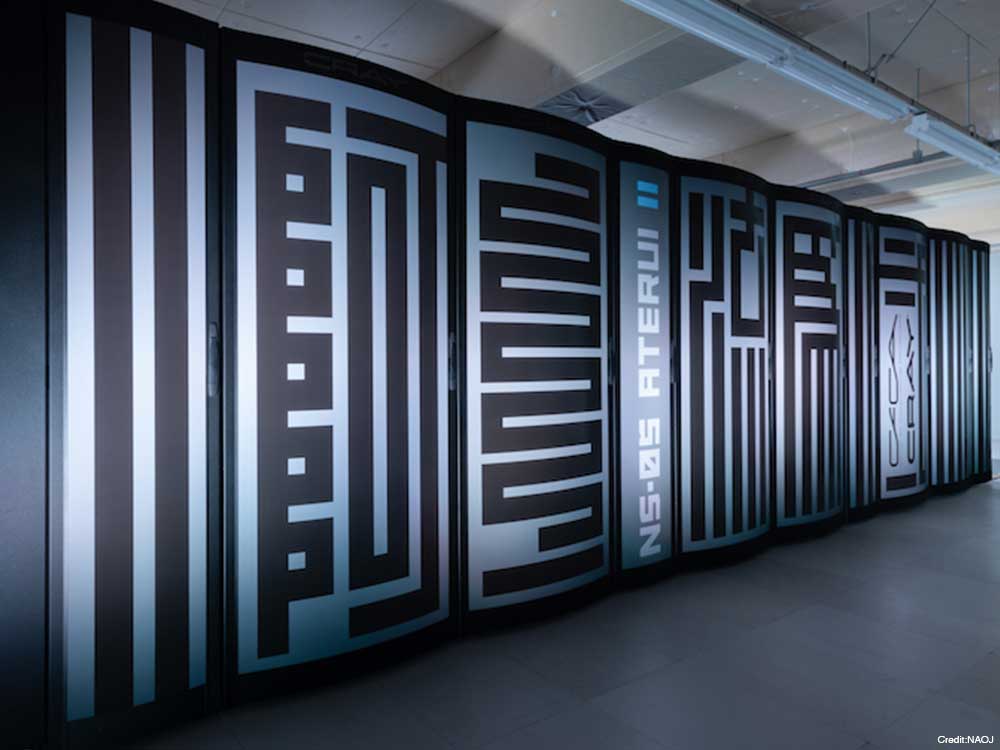
But there’s a problem with that. Studies have shown that the direct collapse scenario can only take place in clouds with low-metallicity, with no elements heavier than hydrogen and helium. The presence of heavier elements like oxygen and carbon changes the dynamics of the gas cloud. The metals cool the gas cloud, and when the gas self-collapses, it fragments into smaller clouds. These smaller clouds then lead to the formation of smaller stars, rather than one massive enough to be the precursor to a SMBH.
So direct collapse from these clouds of pristine gas can’t explain all of the SMBHs that we see at the center of galaxies.
Chon’s team used a poweful supercomputer to tackle this question. The computer is called “ATERUI II” and it’s operated by the National Astronomical Observatory of Japan (NAOJ). The team performed long-term “3D high-resolution simulations to test the possibility that supermassive stars could form even in heavy-element-enriched gas,” as it says in a press release.
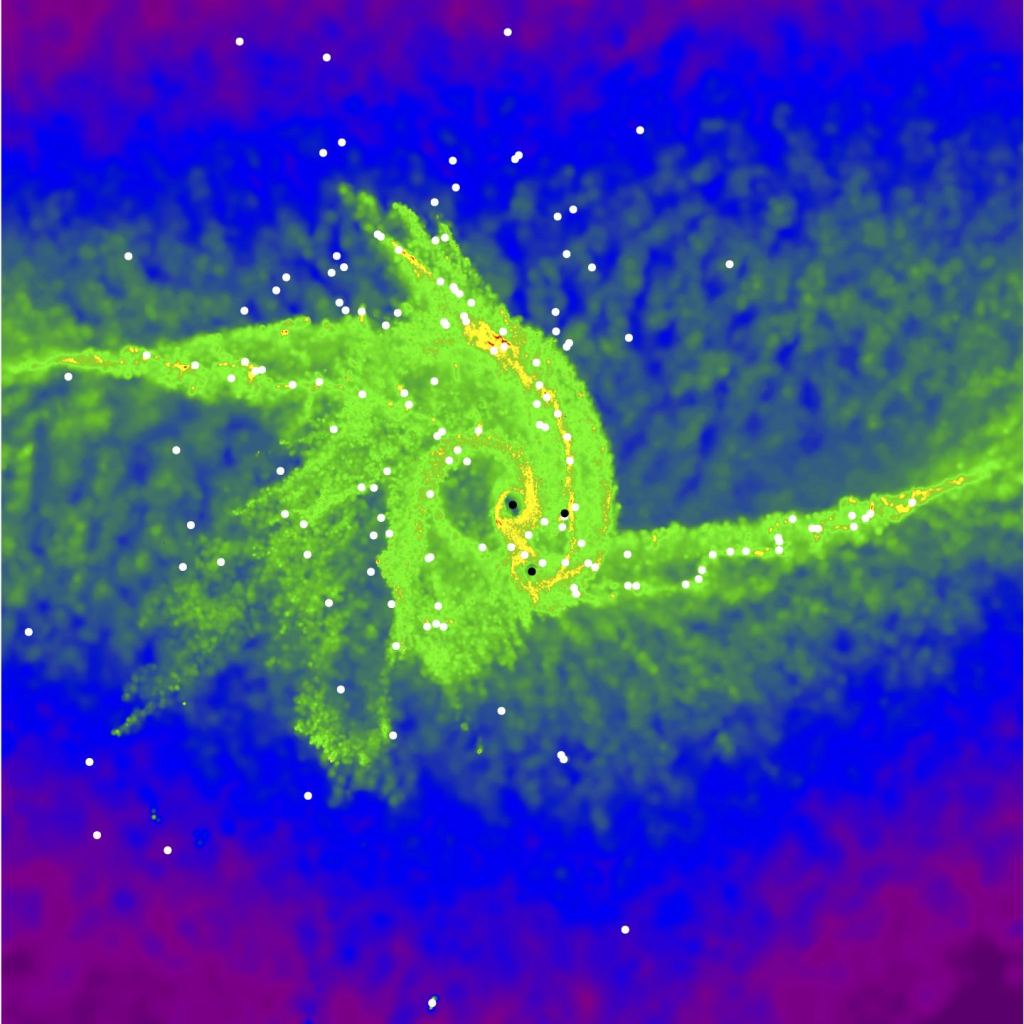
CREDIT: Sunmyon Chon
Previous studies were partly correct, according to this simulation. The massive gas clouds still fragment, if there’s enough metallicity to cool them, causing the formation of many smaller stars. But Chon’s simulation shows that the fragmentation isn’t enough to prevent massive progenitor stars from forming.
Their work shows that a strong gas flow towards the center of the cloud draws the smaller stars in, to be swallowed up by the massive stars in the center. In this way, despite the fragmentation of the cloud and the formation of smaller stars, high-metallicity gas clouds can still form stars massive enough to be the progenitors for SMBHs. They grow massive enough partly through cannibalizing the smaller stars.
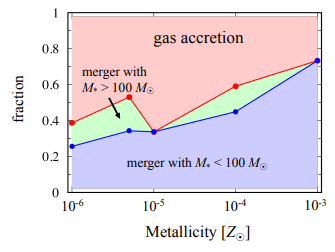
“This is the first time that we have shown the formation of such a large black hole precursor in clouds enriched in heavy-elements. We believe that the giant star thus formed will continue to grow and evolve into a giant black hole,” says Chon.
Chon’s simulation also resulted in the formation of a star that was 10,000 times more massive than our Sun. A star that massive is certainly large enough to be the progenitor for a SMBH.
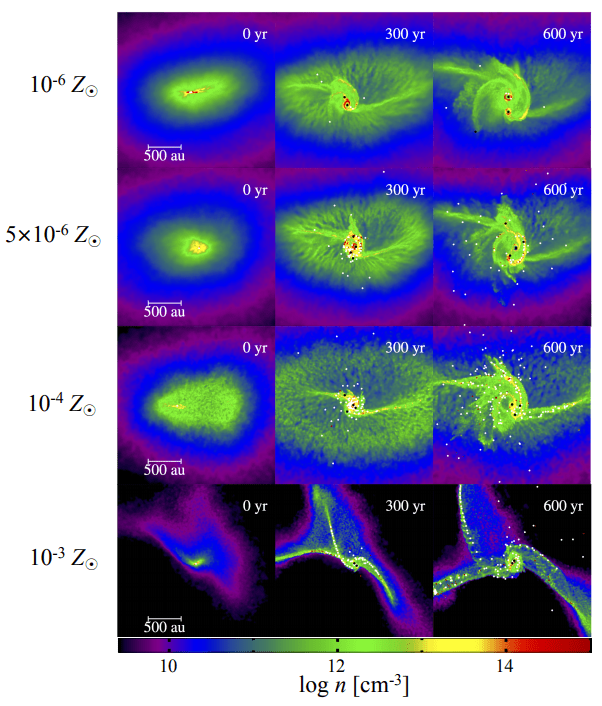
As the authors write in their paper, “Even when fragments are produced
by the dust cooling, they move with the inflowing gas and finally merge with the central stars. For this reason, the primary stellar mass growth is almost independent of the cloud metallicity…”
Giant stars are the precursors for SMBHs that we see in almost all large galaxies. This study, through powerful simulation, shows that these precursor stars can form more readily in gas clouds with greater metallicity than previous work shows.
If it stands up to more scientific scrutiny, we may have our answer for one of astronomy’s most compelling questions: Where do the behemoth Super-Massive Black Holes at the center of galaxies come from?
Next up: What effect do these monsters have on the galaxies that host them?

